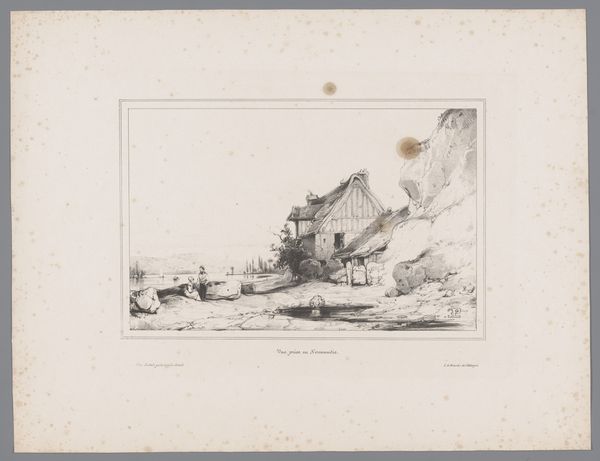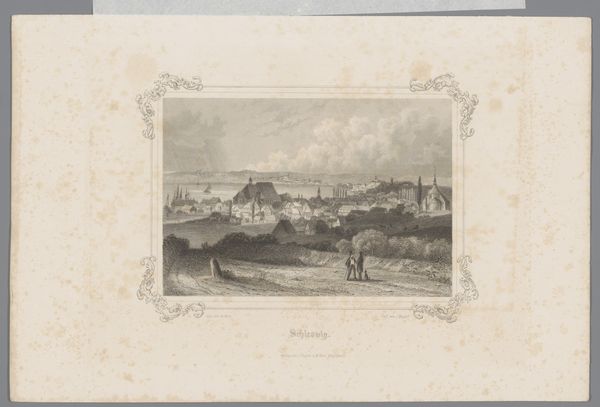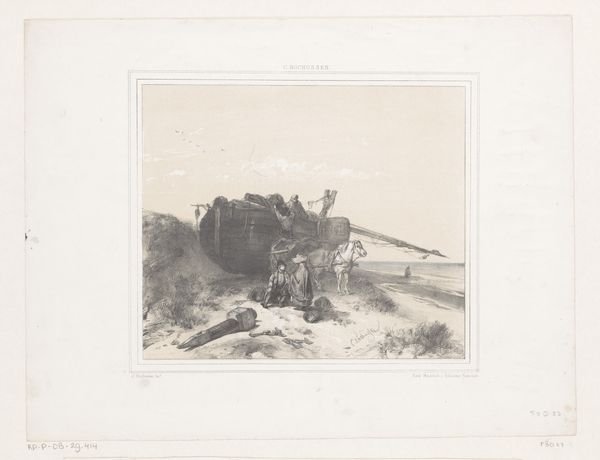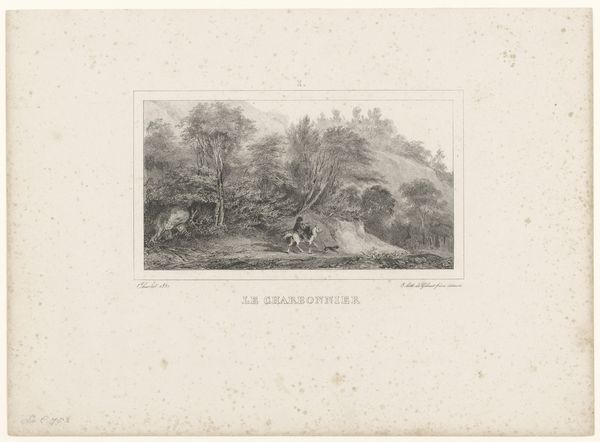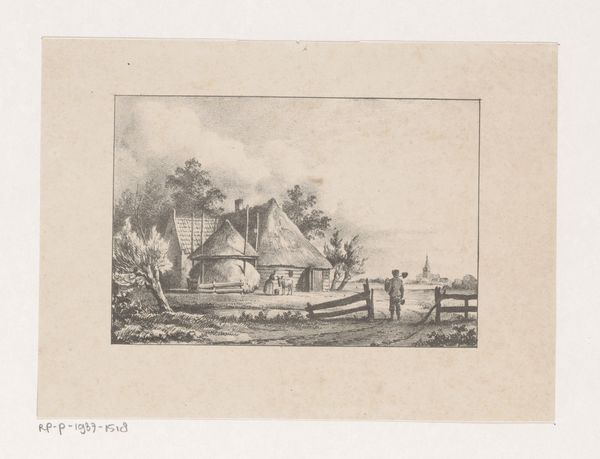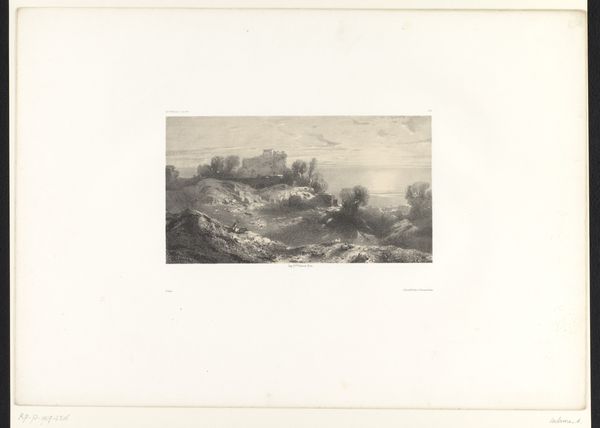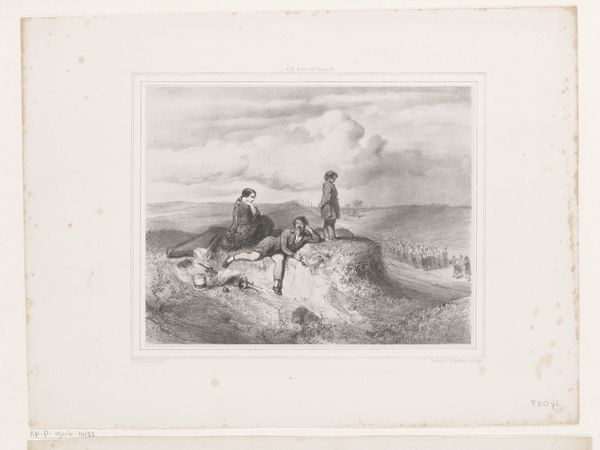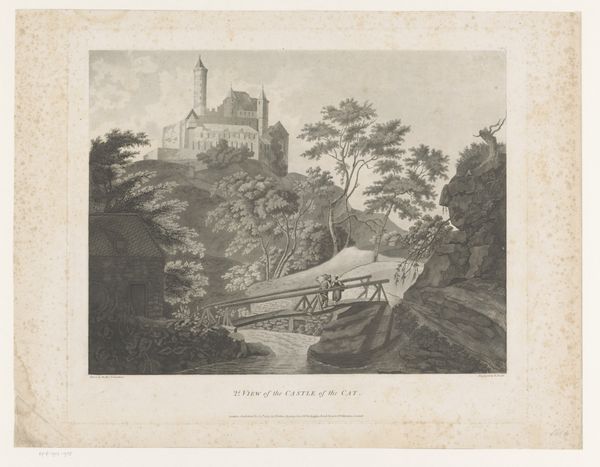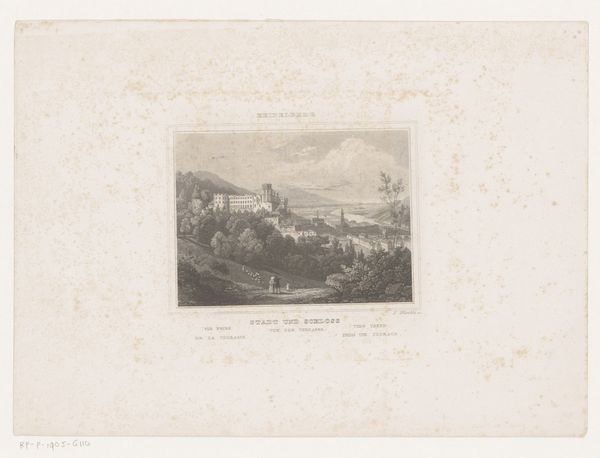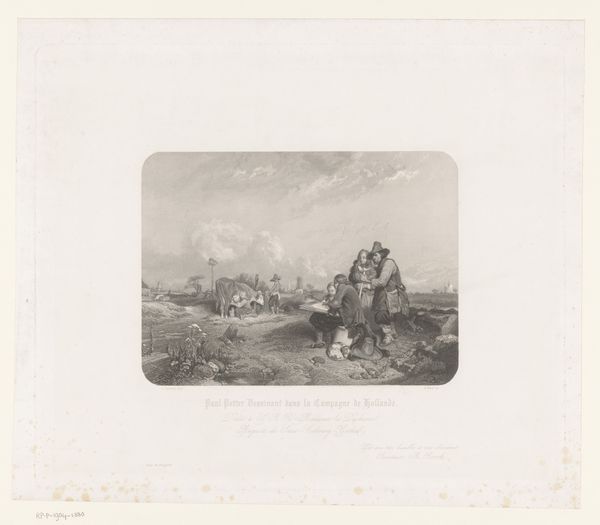
print, engraving
# print
#
landscape
#
romanticism
#
cityscape
#
engraving
Dimensions: height 274 mm, width 358 mm
Copyright: Rijks Museum: Open Domain
Editor: This is "View of Lourdes," an engraving by Paulus Lauters, sometime between 1816 and 1851. The castle perched atop the rocks creates a rather imposing image. What compositional elements strike you most? Curator: The strong diagonal formed by the ascent from the lower right corner to the towering castle is immediately arresting. Note how Lauters manipulates light and shadow to amplify this diagonal, creating depth and directing the viewer's gaze. The very geometric quality of the architectural construction reinforces the power of this imposing castle looming in the background. Editor: The small figures walking into town are dwarfed by the sheer scale of everything. Is that contrast intentional? Curator: Undoubtedly. Their presence functions as a tool to exaggerate the castle's monumentality. Consider also how the formal elements-- the etched lines, the calculated distribution of tone— work together to establish the city’s structure. Do you perceive how this underlying framework contributes to the emotional tenor of the scene? Editor: I think so. It creates this sense of drama, even though it's a very still image. Are the atmospheric effects created through subtle tonal gradations? Curator: Precisely. Lauters masterfully uses engraving to create atmospheric perspective, particularly evident in the misty rendering of the background elements. This blurring effect not only recedes the background, thus enhancing the primary focal point of the castle, but also introduces a sense of distance and the sublime. How does this tension between structure and ethereality play out for you? Editor: I appreciate how your analysis showed how much detail there is even in this greyscale engraving, especially regarding the use of depth. Thank you! Curator: And I you; close visual examination always reveals nuances one might initially overlook.
Comments
No comments
Be the first to comment and join the conversation on the ultimate creative platform.

